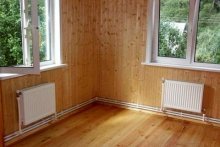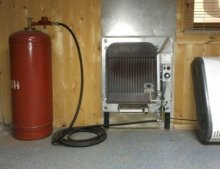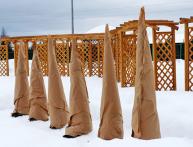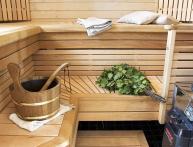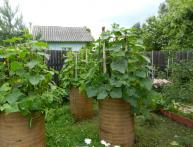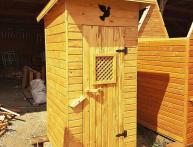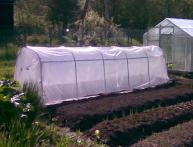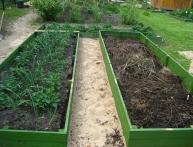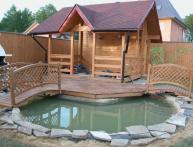How to heat a dacha in winter: practical recommendations
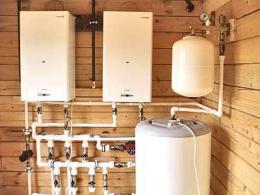
At this time of year there is no tedious weeding, planting, watering and other time-consuming work, but very interesting for people of any age. There is time to just walk around the snow-covered garden, dream and plan the beds for future planting. Clear the snow from the paths, and then warm up and drink fragrant tea infused with herbs in your home. The main thing is that there is warmth in it, which can be created, but is not always easy.
Modern technologies mastered in the production of building materials make it possible to choose any of them and even build a multi-story dacha in a short time. And immediately with a well-thought-out heating system, designed and implemented not only independently, but also with the involvement of specialists in this field.
Content:
Heating in old country houses
Almost everything dacha owners they tried to build a stove or just a brick column. Not all nearby settlements are equipped with gas supply. In many places, the electricity supply is turned off during the winter and metal pipes laid on the surface of the ground are used to supply water. It is clear that in such cases it makes no sense to talk about water heating in winter.
Coal and firewood are often used as fuel.But the main disadvantages of brick stoves are the inability to obtain the desired temperature quickly and the need to regularly fire the stove at least once a day. Immediately upon arrival at the dacha you will have to turn on the electric heater, if possible.
Brick kilns
There are all sorts of brick stoves. With stove, oven, numerous ovens for drying mushrooms, shoes, clothes, seed storage. Lined with beautiful tiles, the stove is worthily called the heart of the house. Is it possible not to come, even in the harsh winter, just to visit her?
The main elements in the construction of any type of stove are grates, views, cast iron plates, the installation of which is carried out by the stove maker in accordance with the project. They are always on sale and even in case of repair they are easy to buy and simply replace.
The efficiency of the furnace depends on the size of the combustion chamber. A variant of the stove used only for heating is the Dutch stove with a long chimney. It is often built at the dacha. It definitely requires a foundation that goes deep, and not just built into the floor.
There are many designs for brick ovens with hobs, with a boiler, if there is a heating system. They are all good, but they require at least two hours to start releasing heat into the house.
Servicing the stove is not difficult. The main thing is to stock up on time with the required amount of fuel, remove ash and clean the chimney from soot. This operation can be carried out very rarely, if you follow the advice, burn the aspen log at the last moment of the furnace firing process.
Metal furnaces
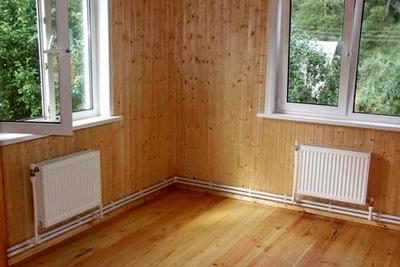
This type of stove is a good alternative to a brick stove.Their advantage is considered to be rapid heating and heat transfer by walls of different thicknesses, depending on design solutions during manufacturing. And also the possibility of installation simply on the floor without a foundation. Unfortunately, they quickly cooled down and the combustion process had to be maintained constantly.
Modern stove models have beautiful appearance and serve as a real decoration of the house. They are reliable and can retain heat for up to 10 hours, as opposed to 3 hours with older models. This is due to the use of heat-resistant high-alloy steels.
The most popular ovens are:
- Pechurka. Manufactured at the Teplodar plant and used for heating small rooms. It can be used for cooking.
- Top Model. The design of the stove with two rows of complexly shaped pipes allows you to create a powerful flow of warm air and quickly warm up the cottage.
- Teplodar Rus, Termofor Cinderella, Tatra 14.
- Vertical ceramics. In addition to good heating properties, it has a glass door through which you can look at the fire.
- Fireplace inserts Jotul, Tarnava. Their functions are the same as those of metal stoves, but the design corresponds to a closed fireplace. The difference is the presence of a smoke collector, a valve and a forced convection system.
- Cassette fireplaces. The firebox for them is made of cast iron, in which cracks do not form, and they do not smoke like brick ones. Fireplaces are fireproof structures and quickly heat the room.
Electric heaters
These devices were always one of the first to be purchased when dacha arrangement. Many models with exposed heating elements can now only be found in barns and attics. Modern heaters are divided into 4 groups:
- Oil heater.The operating principle of the most common device is to transfer heat from oil heated by an electric coil to a metal body. Modern models have the ability to use several operating modes. Heating of the room does not occur very quickly, but, working in economical mode, with the support of the heated stove, it warms a small room well all night.
- Electric convector. Heating occurs due to the movement of warm air passing through the heating elements. The device is controlled using thermostats to regulate the temperature. The device turns on and off automatically. With their help, the room is quickly heated, which is very convenient to do immediately after arriving at the dacha in winter.
- Fan heaters. Heating of the room occurs quickly, but they burn oxygen and their long-term use is not recommended.
- Infrared heaters. This is a modern type of electric heating, due to which not only the air is heated, but also all objects nearby. Heat from the devices comes immediately after switching on, but it is not recommended to stay directly in the area of its effect for a long time. Of all the electric heater options, they are the most efficient.
Heating in modern country houses
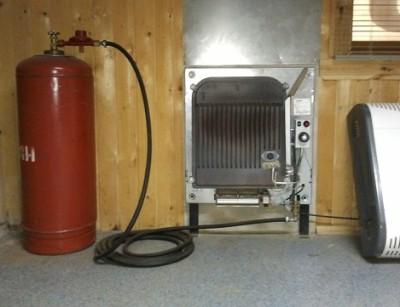
The principle of organizing a dacha heating system, thought out at the stage of designing a house, is no different from the heating systems of cottages and residential buildings. The decisive point is the presence of heating mains. But, as a rule, they are not. The second difference is the implementation of an economical, periodically used heating option, rather than a daily operating one.
To do this, any system must provide: rapid heating of the room of the required area, drainage of water from the pipeline during water heating and have high power for effective heating of houses with low thermal insulation properties.
The heating system in the country begins with the installation of the selected type of boiler and piping the house. It is better to entrust such necessary work as preparing the premises for the boiler room, organizing the devices necessary for ventilation of solid-state boilers, installing the pipeline, starting and testing to experienced specialists. The boiler can be electric, diesel, solid-state and gas.
There are hybrid boiler models that use solid fuel and electricity to operate. Their cost is much higher and they are not always profitable for a dacha where they do not live permanently in the winter. A wood-burning boiler is the easiest to withstand temperature changes in winter.
It also falls into the category of economical options. The convection type of wood boiler is the most common. It has a low noise level, which makes it possible to install it in basements. A large selection of modern boiler models makes it possible to increasingly use water heating.
When building a large dacha, it is the best heating option. Its essence lies in the possibility of constant circulation of water heated to the desired temperature through pipes to the batteries located in the house and back. To lay the pipeline, pipes made of metal, polypropylene or metal-plastic are most often used. They can be used for many decades only if properly preserved for the winter.
Another problem is the timely replacement of water filters, in the absence of which, the pipes quickly become clogged with various deposits of impurities contained in the water. Not only water, but also saline solution, glycerin, and propylene glycol can be used as a coolant.
Each of them has its own advantages and disadvantages. Glycerin, for example, does not harden and retains its fluid properties even at a temperature of 30° frost, which prevents pipes from bursting. It's very expensive. Propylene glycol is not toxic, but its specific heat capacity is worse than the harmful ethylene glycol. In connection with the growing volume of construction of dachas from modern materials, it is most appropriate to involve experienced specialists in the implementation of your own heating system.
To keep your dacha warm in winter, you must choose one of the heating options. In this case, early insulation of the house is a very important point. Otherwise, efficiency sharply decreases and energy consumption increases. And it will be difficult to stay warm.
Practical recommendations for organizing heating in the video:
Interesting information about the vegetable garden

